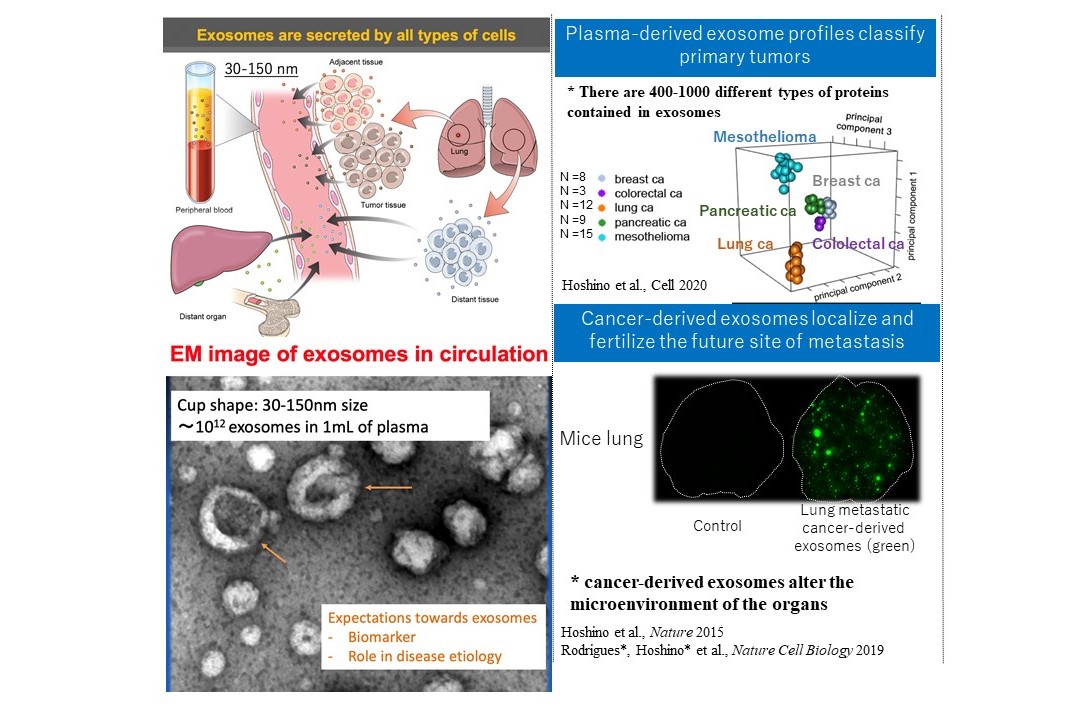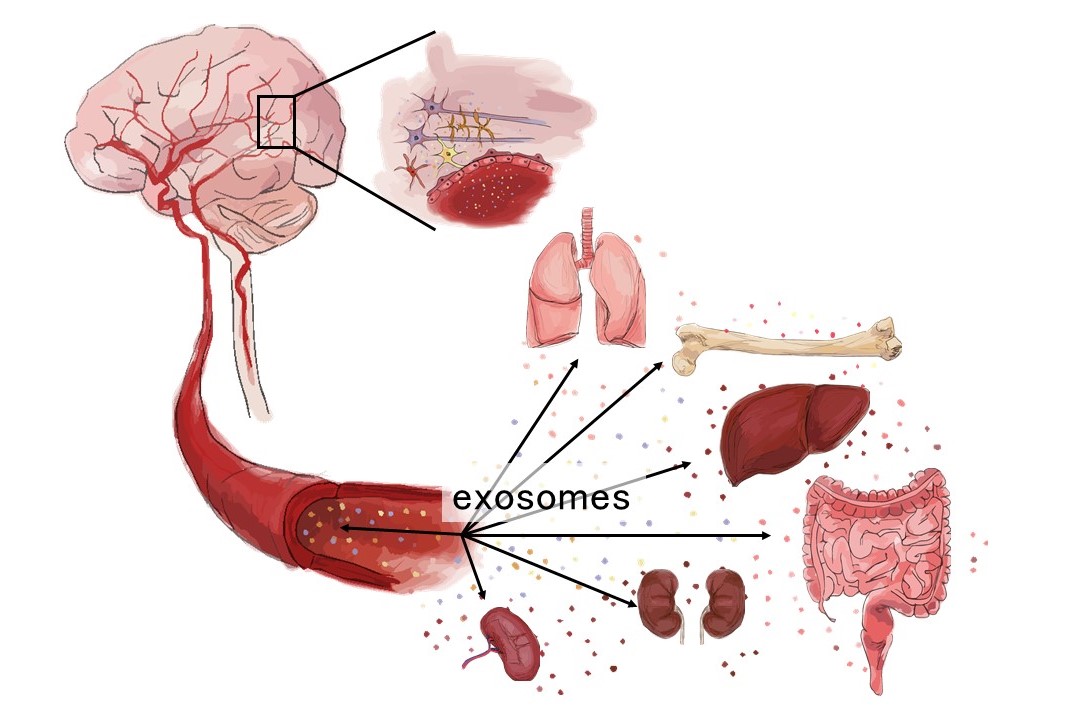Intercellular Communication & Medical Science
Hoshino Laboratory
Exosome in Disease Etiology and Detection
Exosomes are 30-150 nm sized particles produced by all cells and were originally thought to be as a mechanism to dispose unwanted cellular material. In recent years, however, it has become clear that exosomes can be taken up from one cell to another, and they are reconsidered as a new tool for intercellular communication. It has been reported that exosomes contain various substances derived from the original cells, such as mRNAs, miRNAs, proteins, lipids, and even double-stranded DNAs. It has also been shown that specific disease-related exosomes, such as cancer-derived exosomes, are taken up by normal cells and influence cellular phenotype and change the microenvironment within the organ for promoting disease progression. In the Hoshino laboratory, we are focusing on exosomes to elucidate their possible role in the pathogenesis of various diseases.
Exosome in disease etiology and detection
We are investigating how exosomes are involved in the pathogenesis and progression of various diseases such as cancer, preeclampsia, autism spectrum disorder, schizophrenia, and Alzheimer's disease. From the analysis and data obtained by elucidating the relationship between exosomes and various diseases, we also aim to clarify the role of exosomes under normal conditions.
Deciphering exosome heterogeneity
Exosomes have been found to have a highly diverse population, due to the molecules contained, size, membrane charge, etc. We aim to decode these differences by examining single exosomes as well as understanding the biogenesis of exosomes.

Exosome in disease etiology and detection

Deciphering the inter-organ interaction of exosomes and how it could relate to different athological/physiological conditions
★Comments from lab members
At Hoshino Lab, we strive to understand the function of exosomes throughout the body, from cancer and autism to aging and pregnancy. Our diverse and inclusive atmosphere welcomes lab members with various backgrounds, researchers from around the world, and even high school students visiting the lab, creating a nurturing and stimulating environment. (Project Researcher)
In our lab, we conduct experiments while respecting each other as researchers, regardless of age, gender, or nationality. From students to professors, everyone sits together in one room, which creates a unique atmosphere where it's easy to have casual discussions about research methods and experimental procedures. This collaborative environment sets our lab apart from others. (PhD Student)
The bonds between our members are exceptionally tight, and despite our diverse backgrounds, we energize and support each other through vibrant discussions, nurturing personal and professional development. Additionally, we're a group of free spirits who might spontaneously head out for cherry blossom viewing or engage in a game of Jenga. Our lab has a distinctive atmosphere of freedom and flexibility, where unpredictable events occur regularly, regardless of their relevance to research! ( PhD Student)
Member

-
- Professor
Ayuko HOSHINO
Research Area: Molecular biology, Exosome biology, Disease Biology
- Professor
Laboratory Homepage
Tags

